KINE 3360 Critical Reading Response: Gender and Sexuality in Sport
VerifiedAdded on 2023/06/03
|5
|987
|143
Report
AI Summary
This report provides a critical response to the influence of gender in sports and how masculinity stretches the ideals of gender, focusing on two articles: "Athletic Genders: Hyperbolic Instance and/or the Overcoming of Sexual Binarism" by Judith Butler, and "No Taste for Rough-and-Tumble Play: Sports Discourses, the DSM, and the Regulation of Effeminacy" by Mary Louise Adams. The report explores themes such as the blurring of female gender ideals, the societal impact of masculinity in sports, and the potential for sports to transform gender behavior, with a discussion on the limitations of using sports as the sole determinant of gender identity. The author also reflects on the importance of acknowledging LGBT rights and the need for more comprehensive research in this area. References are included in APA formatting. The report emphasizes that human rights should not be discriminative, though this is not the case across the world.
1 out of 5
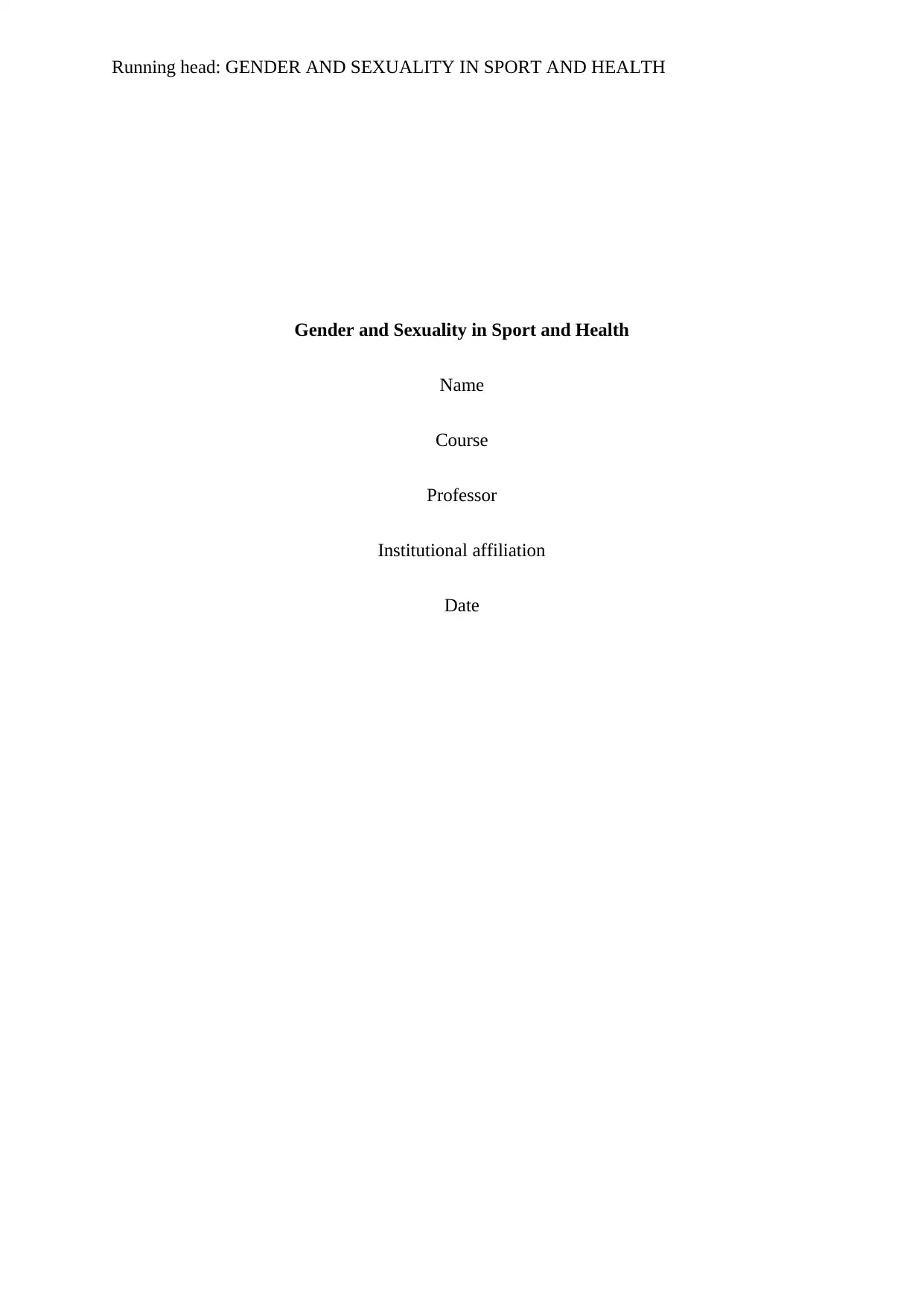
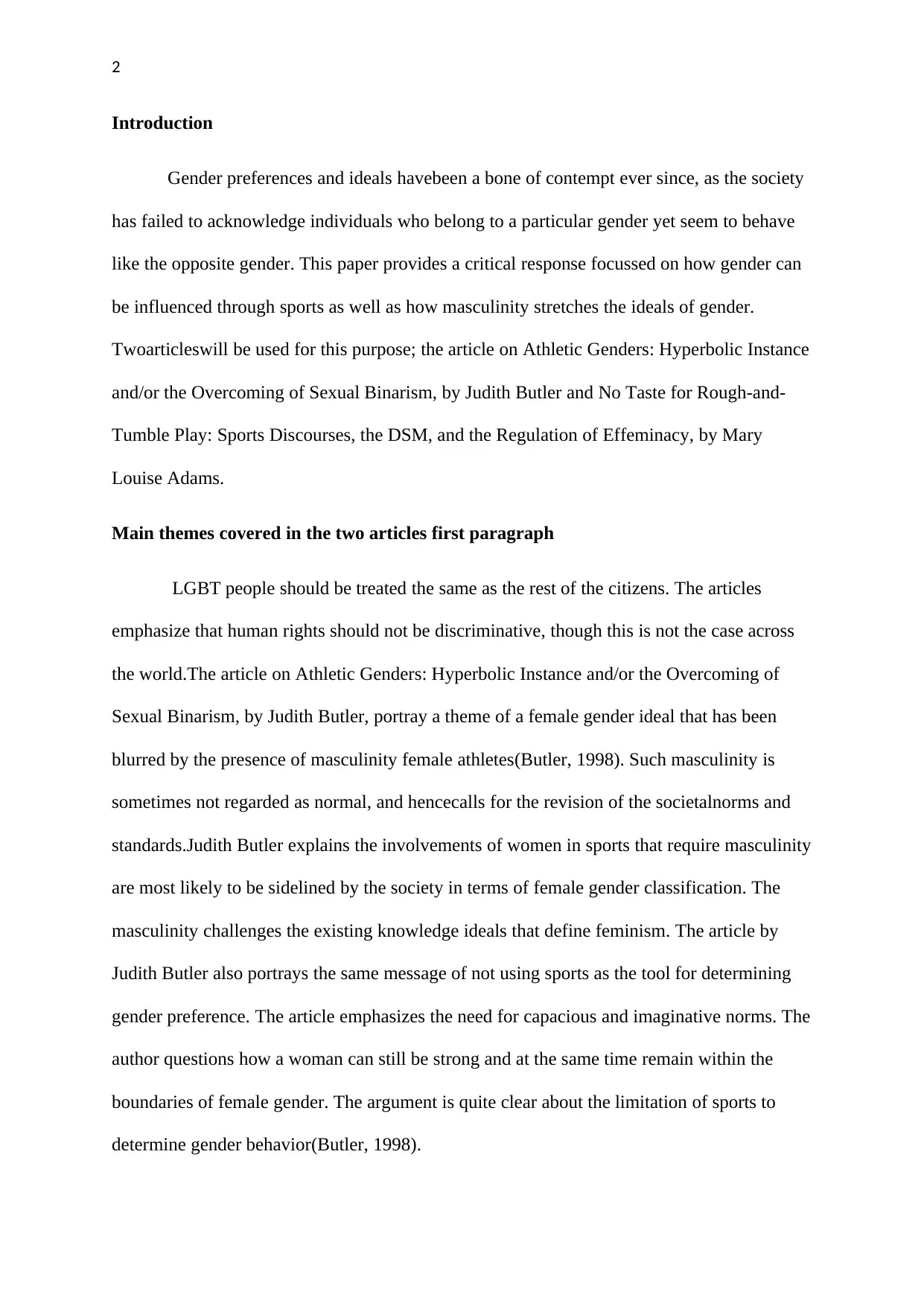
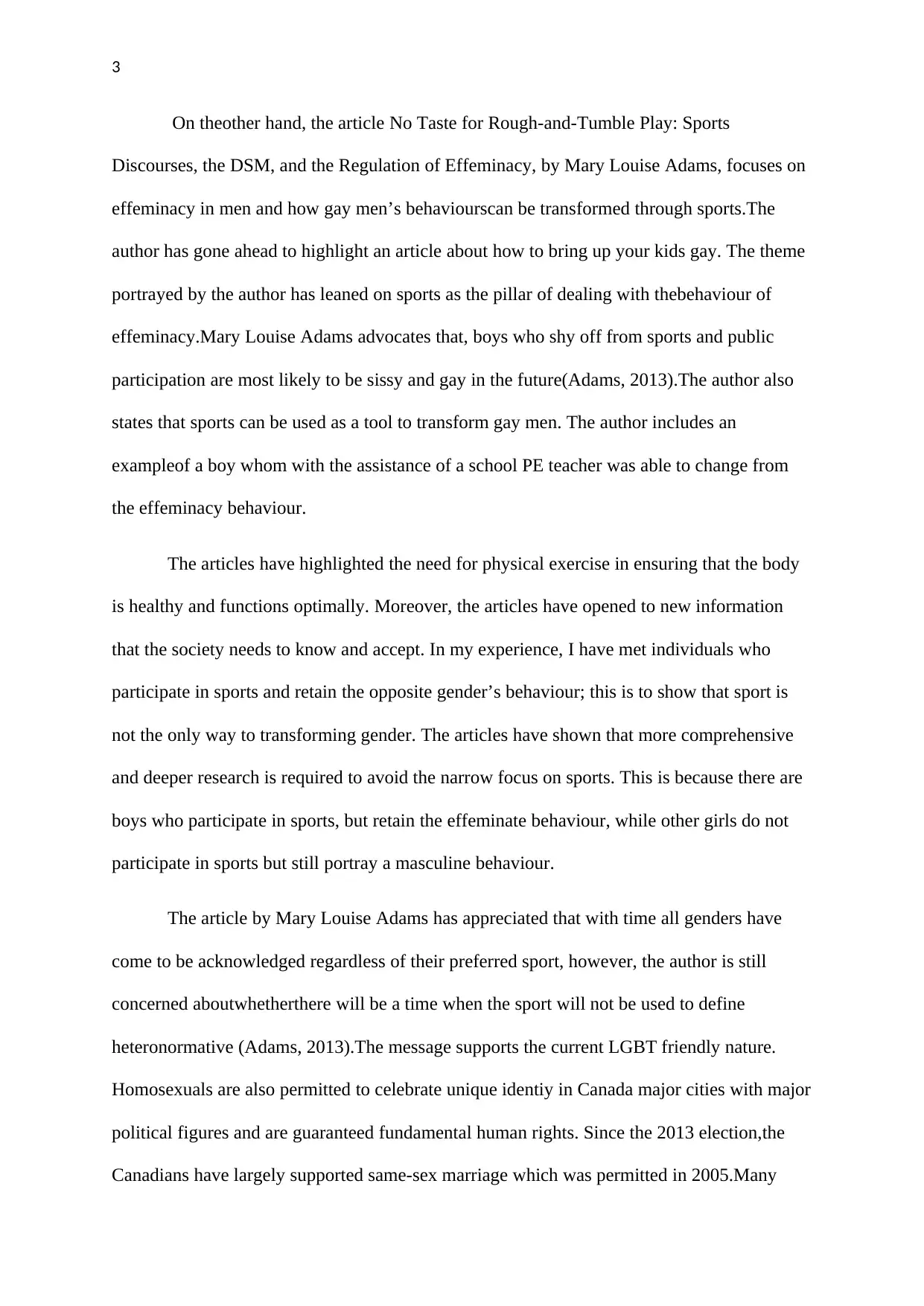

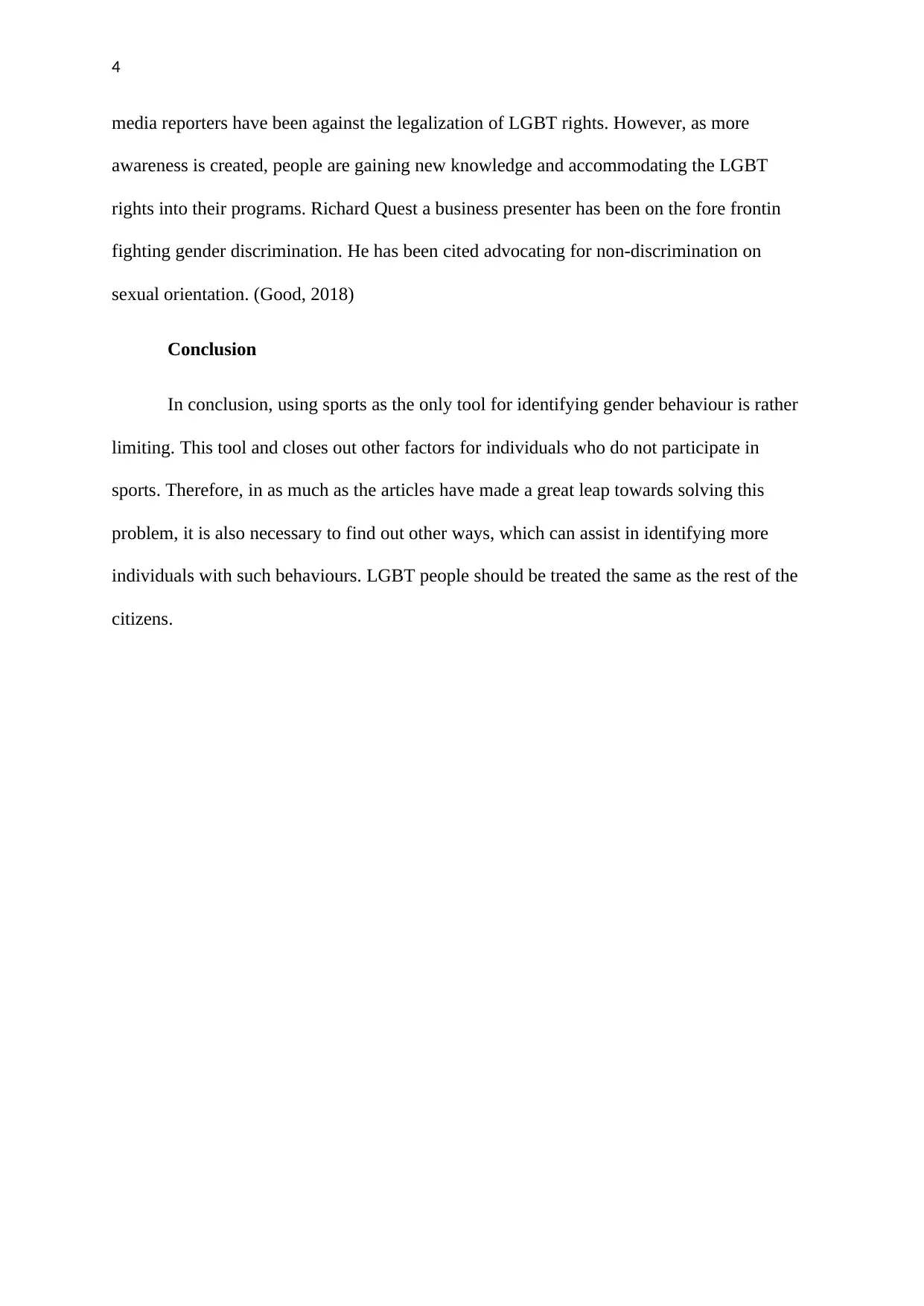
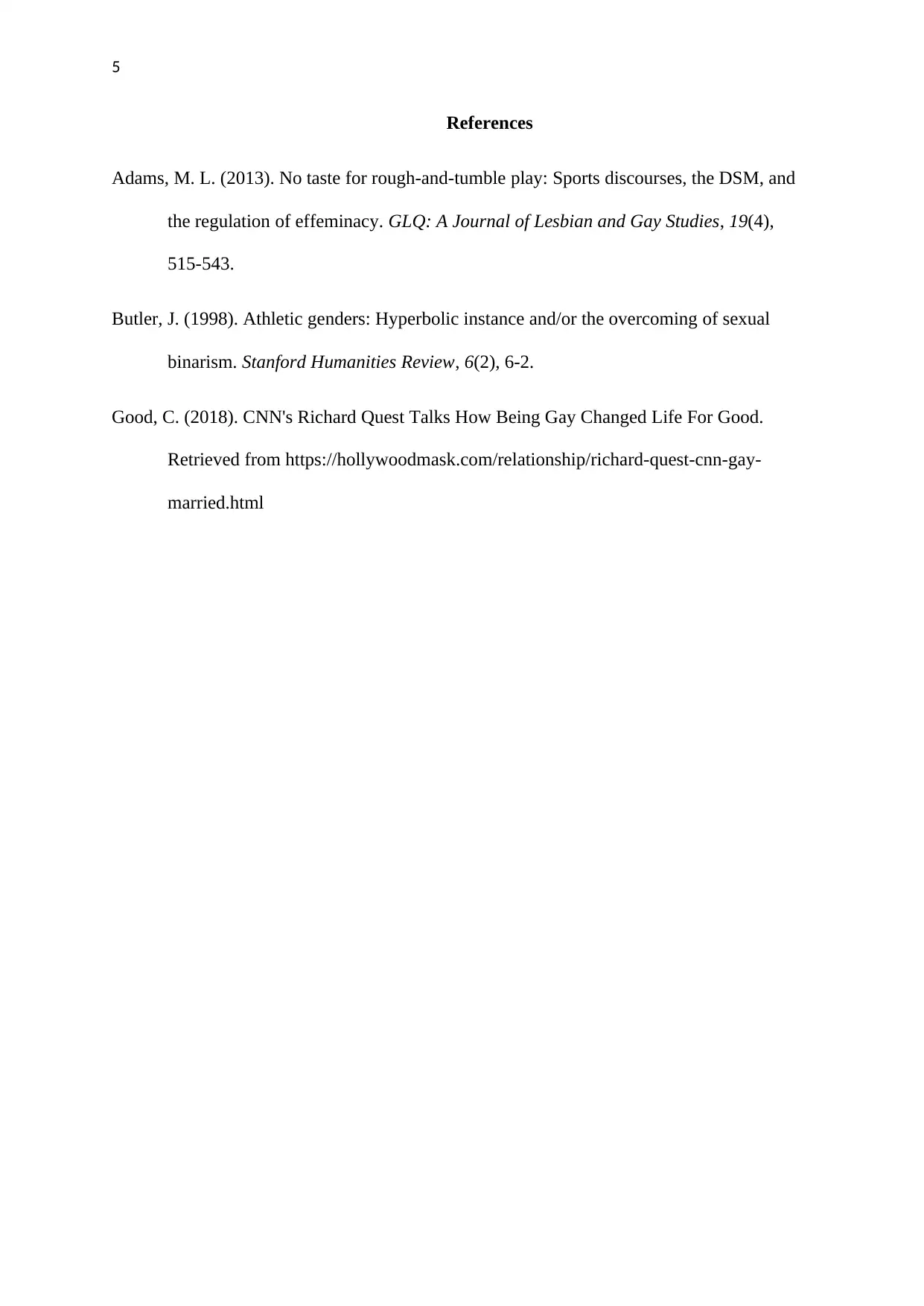

![[object Object]](/_next/static/media/star-bottom.7253800d.svg)